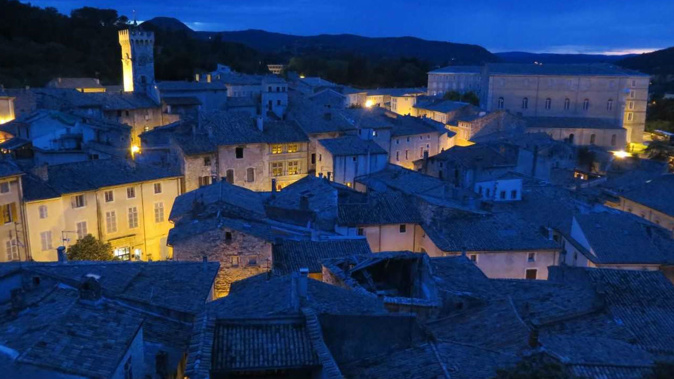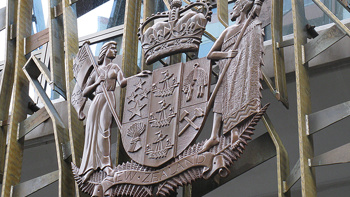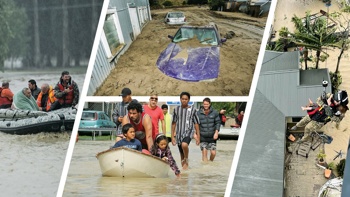
Roaming the riverside delights of the Rhone serves up a rolling photo shoot of scenic riches. Historic towns, some of France’s most famous vineyards, pretty farmland and lavender-laced fields are just the start of the highlights reel. Fed from the glaciers of the Swiss Alps, the 800km-long Rhone River carves its way through some of Europe’s most fabled landscapes, before entering the marshes of the Camargue region and disgorging into the Mediterranean.
Beyond the big-town blockbusters of Lyon, Avignon and Arles, some of the lesser-known riverside locales enriched my romp with the Rhone immeasurably. Close to Arles, Camargue Natural Park, is a compelling proposition for animal lovers and twitchers. The Camargue, which is Western Europe’s largest river delta, is home to more than 300 bird species, including thousands of pink flamingos. Over 20,000 breeding pairs of pink flamingos fly in from Africa to summer-over in these wetlands each year. The birds I spotted were a very pale pink, suggesting they needed to increase their shrimp intake before their feathers reach peak colour, when they turn three.
But the Camargue is probably most famous for the splendid white horses that roam the park. These gorgeous horses are a photographer’s dream, especially when they’re splashing through the park’s marshy waters. Cantering four abreast towards me on their creamy white steeds, a French family of manadieres (ranchers) had me enthralled in this wild side of France. I was visiting the Arnauds farm in the Camargue, where they raise black bulls and break in cheveux blanc Carmarguais, the semi-wild breed of horses indigenous to the region. Both animals have roamed free in these parts for the past 3000 years, originating from Mongolia.
The small, sturdy horses are never stabled and were once used to thresh grain. Occasionally buffeted by the mistral, the French cowboy (gardian)country of the Camargue is steeped with tradition. The family patriarch Gilbert Arnaud was the perfect hands-on guide, as we toured his venerable ranch which has played host to France’s rich and famous. Within the rambling ranch house, the walls were lined with the famous faces of visiting guests, including a photo of Gilbert alongside former President Nicholas Sarkozy. Gilbert previously competed in professional rodeos all over Europe as a bull rider, but now he rears wild Camargue black bulls, distinguished by their lyre-shaped horns.
The finest specimens compete in the traditional French sport of course camarguaise, a much more humane and bloodless version of the Spanish bullfight. The contest entails plucking red rosettes from between their horns with a small hook. As warm sunlight gilded the sprawling Camargue in a golden glow, we saluted the day from a shady porch with a glass of Sable de Camargue, a lovely local bubbly. Sante!
In case you’re wondering, yes, some of the bulls are bred for their meat, ending up on the menus of Camarguais restaurants as “le steak de taureau,” a popular Provençale beef stew. Another staple of the menu is the locally produced rice. Red wild rice traditionally grew in the marshes of the Camargue. Shortly after World War II vast swaths of salt marshes were desalinated to boost agricultural output and the production of white rice. By the 1980s, the white rice had cross-pollinated with red wild rice, giving birth to the current breed of Camargue red rice, “Le Riz Rouge,” which is nuttier and chewier.
The Rhone spills into the Mediterranean at Les Saintes-Maries-de-la-Mer. This popular Mediterranean seaside beach resort is just a few miles south of the Arnauds’ spread. Once a Roman fishing village, the Camargue’s capital is also a fiendishly popular pilgrimage site for Slovak and Hungarian Gypsies who converge here each May to venerate Black Sara. According to legend, she was a servant washed ashore here in Biblical times along with saints Mary Magdalene, Marie-Jacobé.
And Marie-Salomé — the three Maries from which the town derives its name. The fortified church marks their legendary arrival in AD18. Statues in the church depict their arrival ashore.
Heading upstream, an absolute revelation is the drool-worthy village of Viviers. During Medieval times, Viviers was a bustling town with a 30,000-strong population. Today, this little charmer is home to about 4,000. It boasts cobbled streets, a picturesque Old Town and the smallest active cathedral in France — St. Vincent Cathedral, which dates back to at least the 11th century, with sublime tapestries. After disembarking from the riverboat, we tramped along the narrow street leading to the old town, which was built in 1840, when the river had to be redirected.
Thickly flanked in plane trees, it was Napoleon who planted vast swathes of these trees all over southern France, to provide his soldiers shade from the sun when resting. My guide Nina melancholically noted that these iconic trees are in danger. 50,000 plane trees between the Med and Lyon have already died from a canker disease which was inadvertently introduced by US troops during WWII, carried in their ammunition boxes.
Heading up the hillock to the cathedral, we zigzagged our way past solid but simple stone homes, with rustic shutters. The doors seemed to be on the small side, because back in the day when they were built, people were indeed smaller. Many of these houses are 1000 years old! The Romanesque shape of the arches is the big giveaway. The larger doors denoted livestock quarters. During the cold winter months, goats and cattle were brought indoors, as they helped keep the house warm. Tradesmen, shopkeepers and artisans originally lived in the lower town, while the high town was reserved for the clergy, residing in luxurious homes, snuggled around the cathedral.
We passed a magnificent Renaissance mansion, the Maison des Chevaliers, the House of the Knights. Modified over the centuries, the beautiful façade of this four-storey house was placed in position in 1546 by one Noël Albert. He is described in French history books as a “Huguenot captain, business man, philanthropist and warlord.” As twilight cast Viviers in a warm glow, we soaked up the frozen-in-time splendour at Belvédère of le Rocher de Châteauvieux. Situated in the old religious quarter high over the town, this 14th-century fortification provides a pinch-yourself panorama over Vivier's venerable rooftops and the Rhone Valley.
Heading upstream towards Lyon, another lesser-known port call which totally smashed my expectations was Vienne. If you do nothing else here, head up to the town’s Roman Temple. Vienne is a history-hound’s dream, and on the way, every street seemingly leads you to another ancient church, another ruin, or another picture-perfect view of crumbling walls and sloped terracotta-tiled roofs. Vienne is home to one of France’s oldest churches, St. Pierre Church, built in the 5th century. But the piece de resistance is the Temple of Augustus and Livia, built in 10BC.
The Corinthian columns were walled in during the 11th century, when the temple was used as a church. But in the 1830s, the town decided to return it to its original state, when it was dedicated to Augustus and his wife. The five hills surrounding Vienne reminded the Romans of home. Stripped of its Christian trappings, this perfectly intact temple is a tribute to empire building that stands the test of time. It has stoutly remained standing for over two millennia – just one of only two remaining Roman temples left in France.
Check that you are covered in Europe by your travel insurance. Travel is all about being spontaneous and giving-it-a-go, trying things on holiday that you don’t normally do at home. From abseiling to zip-lining, or whether casual cycling, paragliding, skydiving, bungy jumping, white water rafting or glacier walking – Cover-More have your back. For a full list of the summer and winter activities covered,
Cover-More’s 24 hour global assistance centre is just a phone call away. Call 0800 500 225 or visit https://www.covermore.co.nz
Mike Yardley is our Travel Correspondent on Jack Tame Saturday Mornings.
Take your Radio, Podcasts and Music with you









